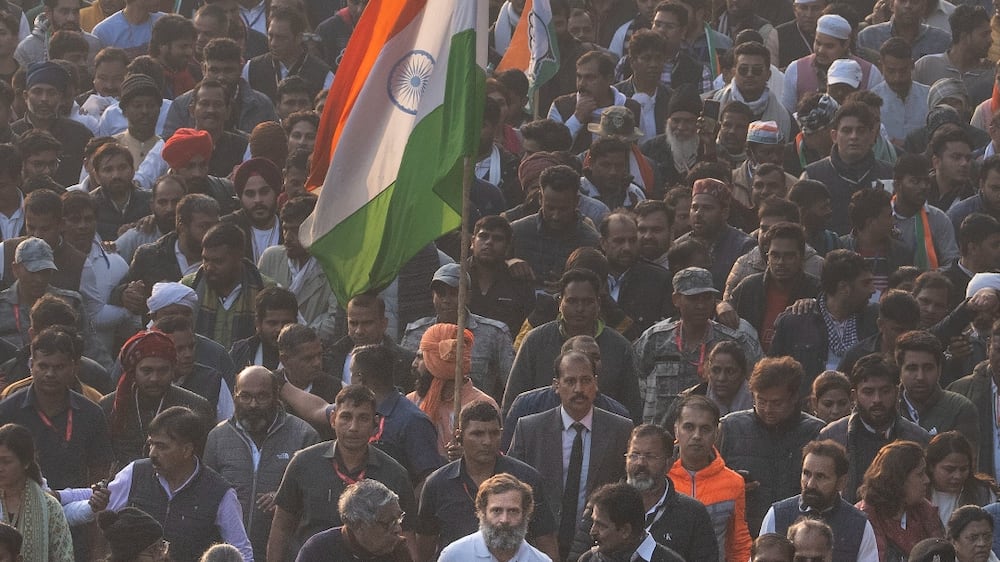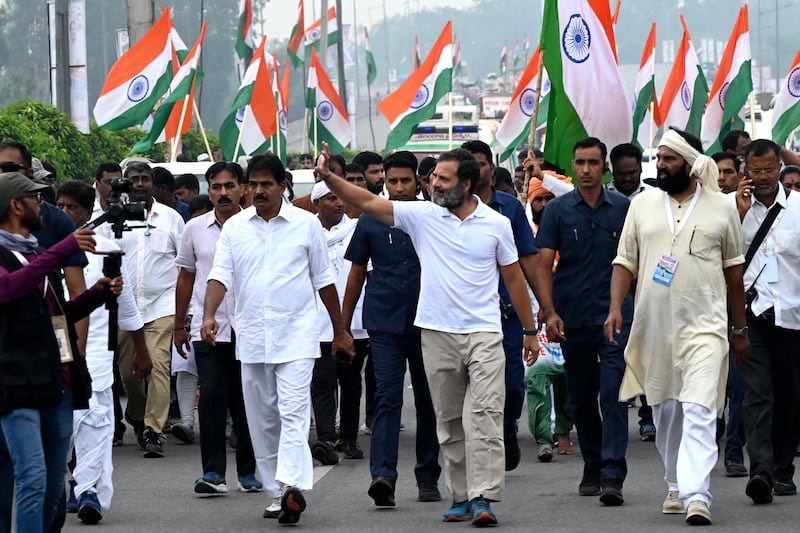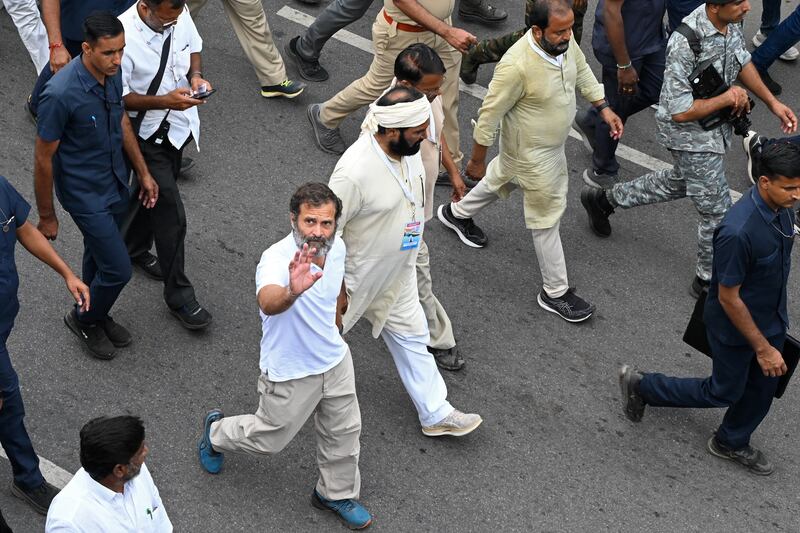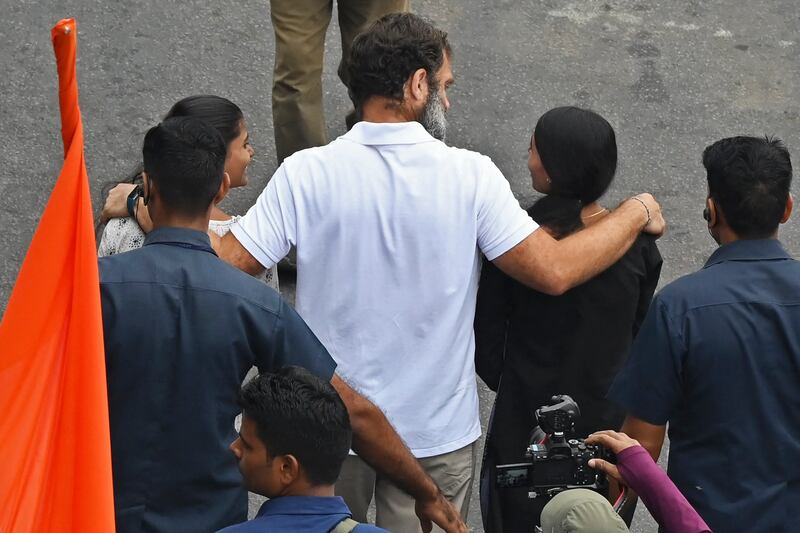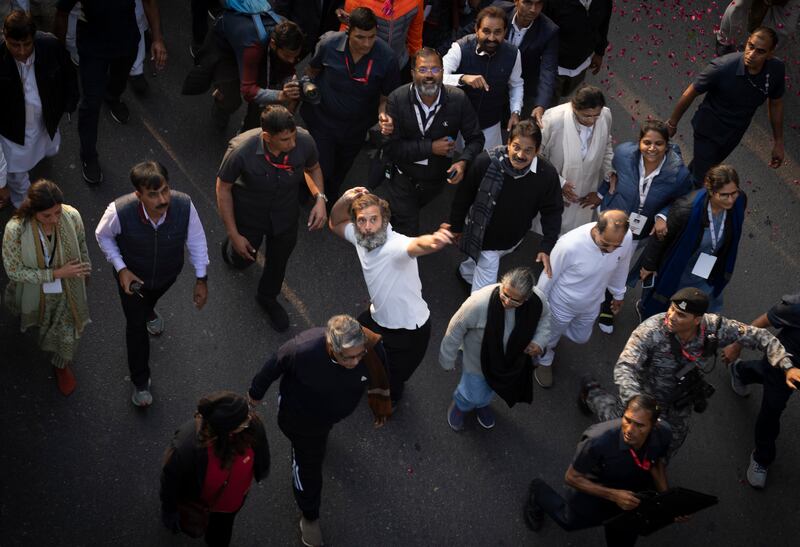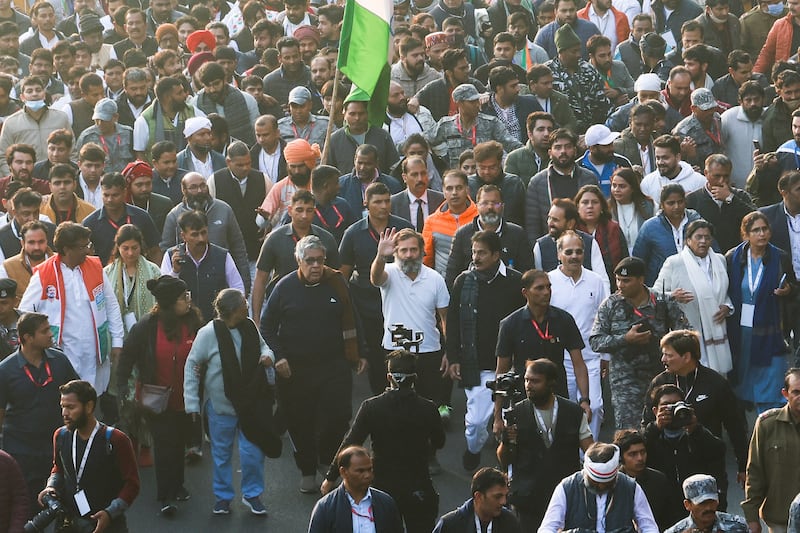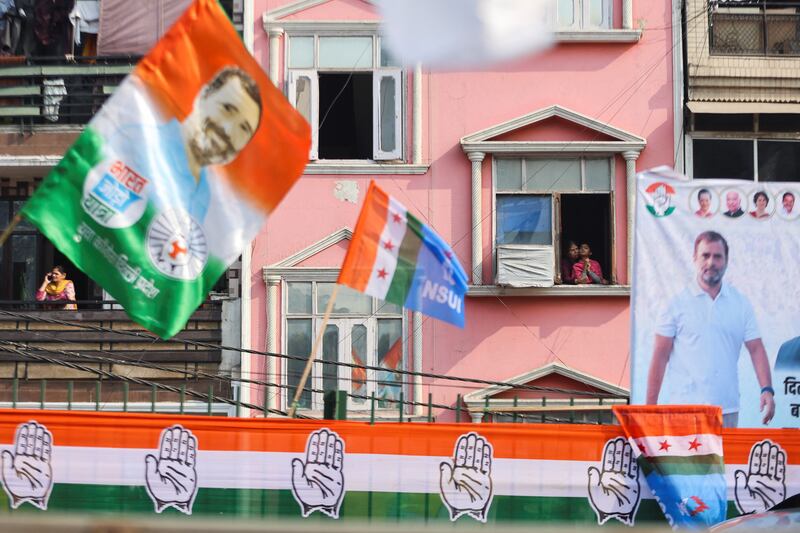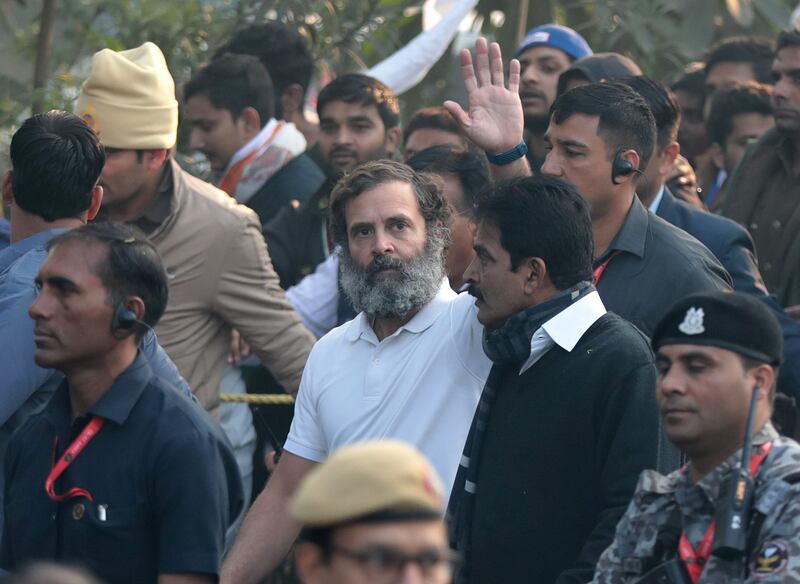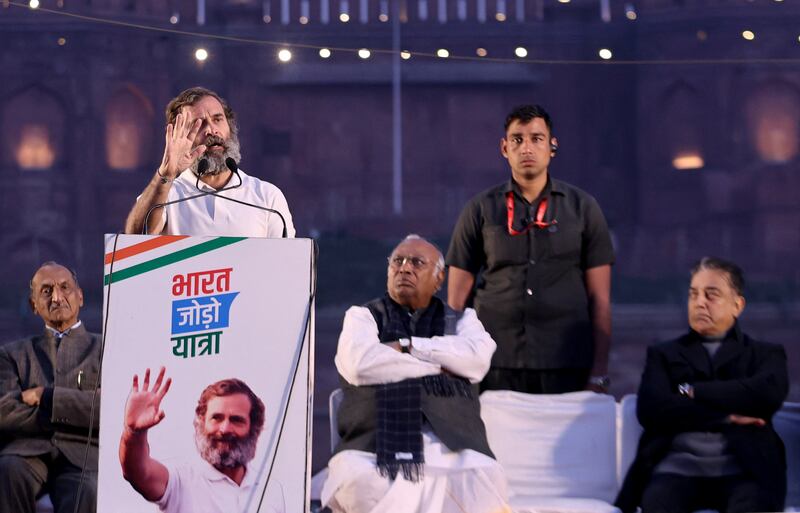On Monday evening, Rahul Gandhi and his followers completed a nearly 4,000-kilometre march across the length of India. The de facto leader of the beleaguered Congress party began his Unite India Rally last September from the country’s southern-most tip of Kanyakumari, before reaching its northern-most territory of Jammu-Kashmir about 150 days later.
The purported reason to organise such a rally, as its name implies, was to begin the process of uniting a country that has, as Congress and several other opposition parties claim, been divided along a number of axes, including on religious and socioeconomic lines. But it was evidently also a part of Mr Gandhi’s mission to resuscitate his political career and revive the fortunes of a once dominant party that has been languishing in the opposition for almost a decade.
Walking 25 to 30 kilometres nearly every day for almost five months across the world’s seventh-largest country is undoubtedly an astonishing accomplishment. It is a glowing testament to the travellers’ physical and mental stamina, even if the journey was punctuated with a few breaks, and to the planning and organisation that went into it.
But the question being asked, and rightly so, is whether the rally can be characterised as a political success. With a little more than a year left before the next general election, it remains to be seen if it can help Congress defeat the governing Bharatiya Janata Party and return to power in New Delhi – its ultimate objective.
The BJP is a highly disciplined organisation that won the 2014 and 2019 general elections, and a number of state elections in between, on the back of the popularity of its leader, Prime Minister Narendra Modi, as well as its Hindutva ideology and a bouquet of populist policies.
It also played up the idea that there is no alternative to Mr Modi, positioning him as peerless, in part by painting Mr Gandhi as the entitled scion of the Nehru-Gandhi dynasty with little political acumen, experience or even the desire necessary to govern a country as large and complex as India. Mr Gandhi has indeed proved no match to Mr Modi, whose humble beginnings and the experience of governing the state of Gujarat for 12 years before becoming prime minister continue to burnish his larger-than-life persona.
Last week, the India Today-C Voter Mood of the Nation survey put the Modi government’s approval rating at 67 per cent. Mr Modi’s own approval rating stands at 72 per cent. If a general election were to be held today, the BJP would return to power for a third consecutive term.
In which case, does the rally even matter? To be sure, much can still change in the next 12-15 months. India’s economy may be growing, but unemployment, inflation and tensions with China along their 3,500-kilometre-long border are problematic. And while Mr Modi remains popular, growing restiveness over the economy could hurt the BJP’s chances of securing a parliamentary majority on its own next year. In such situations, a multiparty coalition with a resurgent Congress at its core might still be able to form a government.
Congress has taken a furtive step in this direction. Given the attention the rally garnered – drawing in tens of thousands of people from various sections of society – it has undoubtedly helped recast Mr Gandhi’s image as a serious politician who is unafraid of the derision and criticism he has been subjected to since he entered politics almost two decades ago.
More crucially perhaps, he has returned Congress to its ideological roots by articulating the values of secularism and civic nationalism – values that underpin the Indian Constitution. This is important.
Since the rise of the BJP in the 1990s, Hindutva – which emphasises India’s Hindu cultural prominence, distinct from its secular and civic nationalist ethos – has gradually become the nation’s dominant ideology. Such is its potency that most political parties, including Congress, have over the years attempted to rebrand themselves as Hindutva-lite. In an effort to court the Hindu vote, which accounts for more than 80 per cent of the electorate, the best of them have been careful not to be seen as placating religious minorities, particularly Muslims. But this strategy has found little purchase among right-leaning voters, with many preferring the real thing – the BJP – to its cheaper imitations.
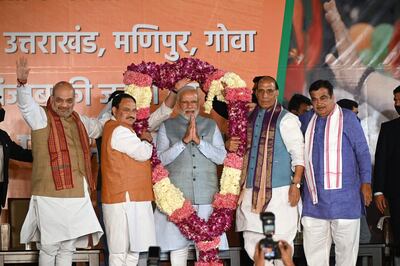
Mr Gandhi has seemingly scrapped this experiment. In various speeches during the march, he was seen to be standing up for the ideals upon which modern India was founded, regardless of the lure of Hindutva. He did this while not entirely relinquishing his own Hindu-ness, most notably by visiting temples but also other places of worship during the journey. This strategy may not necessarily win his party elections in the short term. But by focusing much of his criticism on the Rashtriya Swayamsevak Sangh, the ideological fountainhead of the BJP, he has repositioned Congress, ideologically, in stark opposition to Mr Modi’s party, thereby offering voters a clear alternative at the ballot box over the long term.
However, much as this is being hailed by many liberals and leftists across India, questions remain on Congress’s ability to appeal to the broader electorate. A majority of voters still don’t have an idea of the India Mr Gandhi wants to build, beyond simply returning it to its ideological roots. Few know how he will address issues such as poverty, unemployment and inflation, or how he will deal with China and the fallout from the Ukraine war. Can he convince voters that he, more than Mr Modi, has the solutions to all the big problems – and the ability to implement them?
That only a handful of likeminded parties joined Mr Gandhi during the course of the rally shows that, for now, not everyone in India’s diverse political class is convinced that Congress – despite being the only pan-India party other than the BJP – is worthy of leading a coalition necessary to defeat Mr Modi in 2024.
Another worry for Mr Gandhi is his inability to rein in the infighting within his party. In at least four states, two of which Congress runs, factionalism is rife. One-upmanship may be a feature more than it is a bug in politics, but it takes a strong, vote-catching leader at the top to keep colleagues and cadre alike disciplined and motivated.
Does Mr Gandhi have it in him to bring together fellow party members, as well as leaders from other parties, to forge a united front? It will all depend on whether he can build on the momentum the rally has provided in key state elections this year. If Congress can add to its tally of six states, where it is in power on its own or with coalition partners, the situation will change.
India’s grand old party has surely taken a step forward towards its revival with the rally, but equally there is no doubt that the road to New Delhi remains a long way away.
